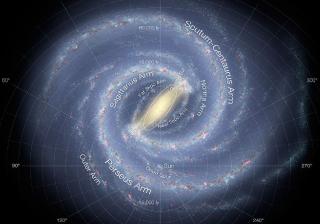López-Corredoira, Martín
Referencia bibliográfica
International Journal of Modern Physics D, Volume 19, Issue 03, pp. 245-291 (2010).
Fecha de publicación:
1
2010
Número de citas
24
Número de citas referidas
21
Descripción
Assuming the standard cosmological model to be correct, the average
linear size of the galaxies with the same luminosity is six times
smaller at z = 3.2 than at z = 0; and their average angular size for a
given luminosity is approximately proportional to z-1.
Neither the hypothesis that galaxies which formed earlier have much
higher densities nor their luminosity evolution, merger ratio, and
massive outflows due to a quasar feedback mechanism are enough to
justify such a strong size evolution. Also, at high redshift, the
intrinsic ultraviolet surface brightness would be prohibitively high
with this evolution, and the velocity dispersion much higher than
observed. We explore here another possibility of overcoming this
problem: considering different cosmological scenarios, which might make
the observed angular sizes compatible with a weaker evolution.
One of the explored models, a very simple phenomenological extrapolation
of the linear Hubble law in a Euclidean static universe, fits quite well
the angular size versus redshift dependence, also approximately
proportional to z-1 with this cosmological model. There are
no free parameters derived ad hoc, although the error bars allow a
slight size/luminosity evolution. The supernova Ia Hubble diagram can
also be explained in terms of this model without any ad-hoc-fitted
parameter.
NB: I do not argue here that the true universe is static. My intention
is just to discuss which intellectual theoretical models fit better some
data of the observational cosmology.
Proyectos relacionados

Morfología y dinámica de la Vía Láctea
El Proyecto se estructura en dos partes, diferenciadas pero complementarias: morfología y dinámica. El estudio detallado de la morfología de la Vía Láctea pretende proveer una base de datos de distribución estelar en las regiones más alejadas y extintas de nuestra Galaxia, mediante el desarrollo de modelos semiempíricos a partir de la información
Martín
López Corredoira